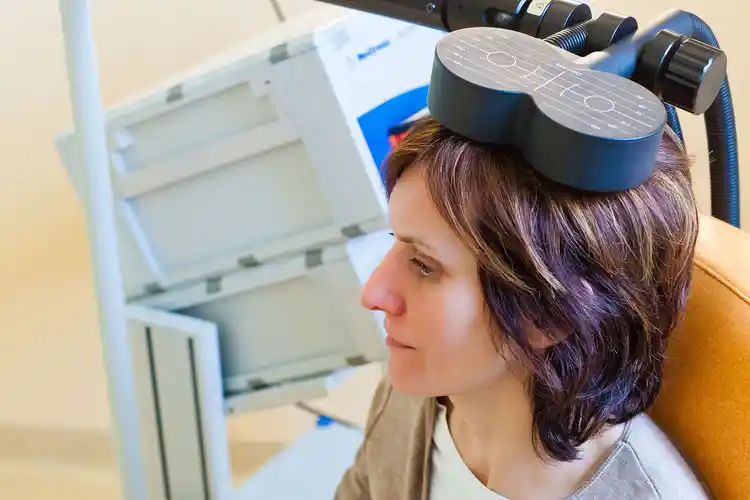Magnetic Therapy for MS

Hide Video Transcript
Video Transcript
[MUSIC PLAYING]
Now, the same principles that apply to MRI have been actually applied medically. There's another form of magnetic therapy called TMS, or Transcranial Magnetic Stimulation, to treat the brain. We know that there are applications already. There are FDA-approved applications for magnetic fields. In addition to diagnostics, we use them for therapy. The FDA considers them very safe.
How can we use magnetic fields in MS? Because of the way magnetic fields work, they stimulate circulation. They increase energy in the tissues. They increase stem cell production. But the biggest, most important value of PEMF therapy in MS is to decrease inflammation.
If you get enough inflammation, you get enough tissue damage, you get what's called plaque. And that's why you do the MRI, is you identify where the plaques are. Are they in the brain or are they in the spinal cord? Where are these lesions?
And you can monitor, then, the progression of the treatments that you have for those lesions. Every plaque has around it inflammation. And that inflammation then limits the brain's ability to function, which is what causes the symptoms in MS, which can cause paralysis, can cause spasticity, can cause memory problems, can cause tremors. The ultimate goal of TMS or PEMF therapy to the brain is to try to prevent new plaque from growing and to shrink and help the brain to heal the plaque that's already there. And so PEMF is not specific to a symptom. It's helping the brain to be healthier and to function better.
Now, there are lots of medications that are FDA-approved for treating MS. There are challenges. They're not perfect. And they don't heal the brain. They don't cure the MS.
So magnetic field therapy, combined with the nutrients, combined with medications, combined with anything that helps with symptoms like nausea, like headaches-- you can still use medication. And the PEMFs help the body to use those better. So they can be very complementary to the medications.
There are certain things you shouldn't do with that. One of the contraindications to it is pregnancy. So if you have a pacemaker, or if you have a cochlear implant, or if you have a defibrillator-- implanted defibrillator, we need to be certain that they can be used with magnetic field therapy.
So today-- 20 years ago, we had more of a problem. Today, most of this type of equipment is what's called MR-conditional. You can use it in an MRI. And if you could use it in an MRI, most PEMF therapies are safe to be used with these implanted equipment.
WILLIAM PAWLUK
Magnetic therapy is not new. It's been around in Eastern Europe for over 50 years. We've only begun to adopt it basically in North America more recently. We're all familiar with MRIs. MRI is magnetic. It's Magnetic Resonance Imaging. It's magnetic fields. And we know they're safe. Now, the same principles that apply to MRI have been actually applied medically. There's another form of magnetic therapy called TMS, or Transcranial Magnetic Stimulation, to treat the brain. We know that there are applications already. There are FDA-approved applications for magnetic fields. In addition to diagnostics, we use them for therapy. The FDA considers them very safe.
How can we use magnetic fields in MS? Because of the way magnetic fields work, they stimulate circulation. They increase energy in the tissues. They increase stem cell production. But the biggest, most important value of PEMF therapy in MS is to decrease inflammation.
If you get enough inflammation, you get enough tissue damage, you get what's called plaque. And that's why you do the MRI, is you identify where the plaques are. Are they in the brain or are they in the spinal cord? Where are these lesions?
And you can monitor, then, the progression of the treatments that you have for those lesions. Every plaque has around it inflammation. And that inflammation then limits the brain's ability to function, which is what causes the symptoms in MS, which can cause paralysis, can cause spasticity, can cause memory problems, can cause tremors. The ultimate goal of TMS or PEMF therapy to the brain is to try to prevent new plaque from growing and to shrink and help the brain to heal the plaque that's already there. And so PEMF is not specific to a symptom. It's helping the brain to be healthier and to function better.
Now, there are lots of medications that are FDA-approved for treating MS. There are challenges. They're not perfect. And they don't heal the brain. They don't cure the MS.
So magnetic field therapy, combined with the nutrients, combined with medications, combined with anything that helps with symptoms like nausea, like headaches-- you can still use medication. And the PEMFs help the body to use those better. So they can be very complementary to the medications.
There are certain things you shouldn't do with that. One of the contraindications to it is pregnancy. So if you have a pacemaker, or if you have a cochlear implant, or if you have a defibrillator-- implanted defibrillator, we need to be certain that they can be used with magnetic field therapy.
So today-- 20 years ago, we had more of a problem. Today, most of this type of equipment is what's called MR-conditional. You can use it in an MRI. And if you could use it in an MRI, most PEMF therapies are safe to be used with these implanted equipment.
